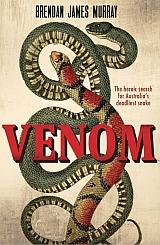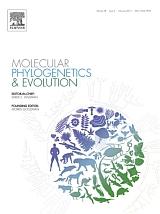




Related bibliographies:
Reptiles
 Snakes Snakes
 Elapidae [part 1] Elapidae [part 1]
 (terrestrial species) (terrestrial species)
Australia
Malay Archipelago






































































































































































































































































































































| |

Bibliography of the genus
Oxyuranus (Taipans)

(Reptilia: Serpentes: Elapidae)
Note:
In order to limit redundancy, relevant literature indexed in the related bibliographies in the left column may not have been included in this page. For a comprehensive search of literature, these bibliographies should therefore also be consulted.
Oxyuranus in general
 |
Covacevich, J. 1987. Two taipans! pp. 480-485. In: Covacevich, J., Davie, P. & Pearn, J. (eds.). Toxic plants & animals. A guide for Australia. Queensland Museum, Brisbane. 501 pp.
Covacevich, J.; McDowell, S.B.; Tanner, C.; Mengden, G.A. 1981. The relationship of the taipan, Oxyuranus scutellatus, and the small-scaled snake, Oxyuranus microlepidotus (Serpentes: Elapidae). pp. 160-168. In: Banks, C.B. & Martin, A.A. Proceedings of the Melbourne Herpetological Symposium May 19-21, 1980. Zoological Board of Victoria, Royal Melbourne Zoological Gardens, Parkville, Victoria. 199 pp.
Hoser, R.T. 2002. An overview of the taipans, genus (Oyxuranus) (Serpentes: Elapidae) including the description of a new subspecies. Crocodilian 3(1): 43-50.
Hoser, R.T. 2009. Eight new taxa in the genera Pseudonaja Gunther 1858, Oxyuranus Kinghorn 1923 and Panacedechis Wells and Wellington 1985 (Serpentes: Elapidae). Australasian Journal of Herpetology 4: 1-27.
Hoser, R.T. 2012. The description of a new genus of West Australian snake and eight new taxa in the genera Pseudonaja Gunther, 1858, Oxyuranus Kinghorn, 1923 and Panacedechis Wells and Wellington, 1985 (Serpentes: Elapidae). Australasian Journal of Herpetology 11: 32-50.
Mackay, R. 1952. The taipan. Proceedings of the Royal Zoological Society of New South Wales 50-51 [1952]: 24-25.
Masci, P.; Kendall, P. 1995. The taipan. The world's most dangerous snake. Kangaroo Press, Kenthurst, New South Wales. 90 pp.
Oliver, J.A. 1958. The taipan, Australia's deadliest snake. Animal Kingdom 61: 23-26.
Scanlon, J.D. 1998. Prey-scaring by visual pursuit predators: a new use for tail-waving in snakes. Herpetofauna (Sydney) 28(2): 5-10.
Shine, R.; Covacevich, J. 1983. Ecology of highly venomous snakes: the Australian genus Oxyuranus (Elapidae). Journal of Herpetology 17(1): 60-69.
Thomson, D.F. 1933. Notes on Australian snakes of the genera Pseudechis and Oxyuranus. Proceedings of the Zoological Society of London 103(4): 855-860.
Wüster, W.; Dumbrell, A.J.; Hay, C.; Pook, C.E.; Williams, D.J.; Fry, B.G. 2005. Snakes across the Strait: trans-Torresian phylogeographic relationships in three genera of Australasian snakes (Serpentes: Elapidae: Acanthophis, Oxyuranus, and Pseudechis). Molecular Phylogenetics and Evolution 34(1): 1-14.
Zwinenberg, A.J. 1975. Der Taipan, die gefährlichste Giftnatter Australiens. Aquarium Aqua Terra 9(69): 125-128.
|
Oxyuranus microlepidotus
 |
Covacevich, J. 1981. On the resemblance between the western brown snake and the small-scaled snake. Herpetofauna (Sydney) 12(2): 30.
Covacevich, J.; Pearn, J.; White, J. 1988. The world's most venomous snake. pp. 111-120. In: Pearn, J. & Covacevich, J. (eds.). Venoms & victims. Queensland Museum, South Brisbane. 135 pp.
Covacevich, J.A. 1976. Recognition of Parademansia microlepidotus (McCoy) (Elaphidae), a dangerous Australian snake. Proceedings of the Royal Society of Queensland 87: 29-32.
Johnston, G.R. 1994. Seasonal changes in dorsal reflectance of two species of Australian elapid snakes. Journal of Herpetology 28(1): 109-112.
Kinghorn, J.R. 1955. Herpetological notes. 5. 1. Taxonomic changes in the genus Rhynchoelaps. 4. A new species of Egernia from Queensland. Records of the Australian Museum 23(5): 283-286.
Macleay, W. 1882. Description of two new species of snake. Proceedings of the Linnean Society of New South Wales 6: 811-813.
McRae, P.D.; Covacevich, J.A. 1997. Combat and copulation in Oxyuranus microlepidotus (Elapidae). Memoirs of the Queensland Museum 42(1): 104.
Mirtschin, P.J. 1982. Occurrence and distribution of the inland taipan Oxyuranus microlepidotus (Reptilia: Elapidae) in South Australia. Transactions Royal Society of South Australia 106(4): 213-214.
Read, J.L. 1994. A major range extension and new ecological data on Oxyuranus microlepidotus (Reptilia: Elapidae). Transactions of the Royal Society of South Australia 118(1-2): 143-145.
Ripa, D. 1982. Parademansia microlepidota: the most poisonous snake of the world. Litteratura Serpentium 2(3): 134-138.
Scott, S.W.; Farquhar, J.E. 2018. Natural history notes: Oxyuranus microlepidotus (Inland Taipan). Diet. Herpetological Review 49(3): 552.
Smith, K.G.C.; Ambikapathy, A. 1992. Envenomation by the small-scaled snake: the world's most venomous snake. Medical Journal of Australia 157(2): 140.
Tan, N.H.; Ponnudurai, G.; Mirtschin, P. 1993. A comparative study of the biological properties of venoms from juvenile and adult inland taipan (Oxyuranus microlepidotus) snake venoms. Toxicon 31(3): 363-367.
|
Oxyuranus scutellatus
 |
Benn, K.M. 1950. A further case of snake-bite by a Taipan ending fatally. Growth (Philadelphia) 14(2): 147-149.
Blyth, K.A. 1956. The Taipan - truth and treatment. Producers Review, Queensland Cane Growers' Council. 2 pp.
Busack, S.D. 2014. Natural history notes: Oxyuranus scutellatus (Taipan). Homing. Herpetological Review 45(2): 340.
Campbell, C.H. 1967. The taipan (Oxyuranus scutellatus) and the effect of its bite. Med. J. Australia 1(15): 735-739.
Deufel, A.; Cundall, D. 2010. Functional morphology of the palato-maxillary apparatus in 'palatine dragging' snakes (Serpentes: Elapidae: Acanthophis, Oxyuranus). Journal of Morphology 271(1): 73-85.
Doorty, K.B.; Bevan, S.; Wadsworth, J.D.F.; Strong, P.N. 1997. A novel small conductance Ca2+-activated K+ channel blocker from Oxyuranus scutellatus taipan venom. Reevaluation of taicatoxin as a selective Ca2+ channel probe. Journal of Biological Chemistry 272(32): 19925-19930.
Flachsenberger, W.; Mirtschin, P. 1995. Digestive properties of snake venoms. Herpetofauna (Sydney) 25(2): 28-31.
Fleay, D. 1953. Adventures with a taipan. Animal Kingdom 56: 56-59.
Glauert, L. 1950. Thomson's mulga snake. Western Australian Naturalist 2(7): 162-164.
Hosmer, W. 1953. An account of supposed mating of the taipan, Oxyuranus scutellatus (Peters). North Queensland Naturalist 22(106): 1-3.
Johnson, C.R. 1975. Head-body thermal control, thermal preferenda, and voluntary maxima in the taipan, Oxyuranus scutellatus (Serpentes: Elapidae). Zoological Journal of the Linnean Society 56(1): 1-12.
Kinghorn, J.R. 1950. The taipan. Australian Museum Magazine 10(3): 73-75.
Mcloughlin, J. 1957. How we caught the taipan. North Queensland Naturalist 26(118): 14.
Morgan, F.G. 1956. The Australian taipan Oxyuranus scutellatus scutellatus (Peters). pp. 359-366. In: Buckley, E. E. & Porges, N. Venoms. American Association for the Advancement of Science, Washington, D.C. 467 pp.
Murray, B.J. 2018. Venom: The Heroic Search for Australia's Deadliest Snake. Bonnier Publishing Australia. 442 pp.
O'Connell, B.; Greenlee, R.; Bacon, J.; Smith, H.M.; Chiszar, D. 1985. Strike-induced chemosensory searching in elapid snakes (cobras, taipans, tiger snakes and death adders) at San Diego Zoo. Psychological Record 35(4): 431-436.
Peters, U. 1969. Der Taipan (Oxyuranus scutatus). DATZ (Die Aquarien- und Terrarien-Zeitschrift) 22: 311-312.
Peters, U. 1972. Nachzucht des Taipans im Taronga-Zoo. DATZ (Die Aquarien- und Terrarien-Zeitschrift) 25: 355-356.
Peters, U. 1982. The breeding of endangered reptiles, a success story. Zoologische Garten 52(1): 21-28.
Reid, C.C.; Flecker, H. 1950. Snake bite by a taipan with recovery. Med. J. Australia 37: 82-83.
Reilly, V.M. 1960. Three poisonous brown snakes. North Queensland Naturalist 28(125): 9-10.
Slater, K.R. 1956. On the New Guinea taipan. Memoirs of the National Museum of Victoria 20: 201-205.
Slater, K.R. 1959. Incubation of New Guinea taipan eggs. Australian Zoologist 12: 306-307.
Thomson, D.F. 1950. The taipan - Australia's largest and most aggressive snake. Illustrated London News 217(5827): 1048-49.
Tisdell, C.; Swarna Nanth, H.; Wilson, C. 2005. Australian tropical reptile species: ecological status, public valuation, attitudes to their conservation and commercial use. pp. 1-40. In: Burk, A.R. (ed.). Trends in biodiversity research. Nova Science Publishers, New York. 194 pp.
Trembath, D. 2004. Possible nocturnal activity by the Costal Taipan Oxyuranus scutellatus (Elapidae) at Hencamp Creek, North Queensland. Herpetofauna (Sydney) 34(2): 84-85.
|
Oxyuranus temporalis
 |
Brennan, K.E.C.; Morley, T.; Hutchinson, M.; Donnellan, S. 2011. Redescription of the western desert taipan, Oxyuranus temporalis (Serpentes: Elapidae), with notes on its distribution, diet and genetic variation. Australian Journal of Zoology 59(4): 227-235.
Doughty, P.; Maryan, B.; Donnellan, S.C.; Hutchinson, M.N. 2007. A new species of taipan (Elapidae: Oxyuranus) from central Australia. Zootaxa 1422: 45-58.
Perez-Fernandez, M.A. 2008. La cooperacion al servicio de la recuperacion de la diversidad: Experiencias en Western Australia. Ecosistemas 17(2): 28-36.
Shea, G.M. 2007. A possible second record of the central ranges taipan, Oxyuranus temporalis (Elapidae). Herpetofauna (Sydney) 37(2): 95-97.
|
| | 


















































































































































































|

